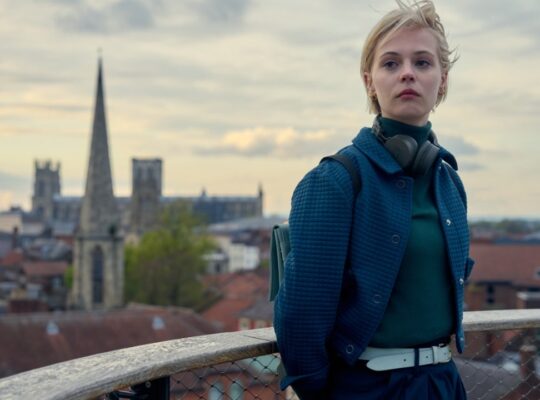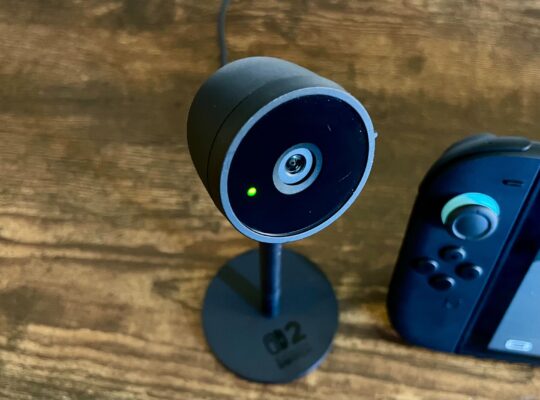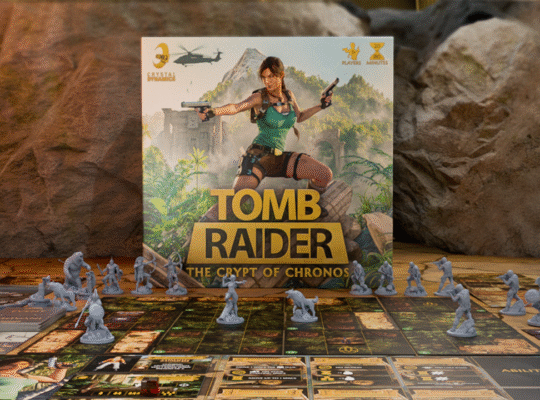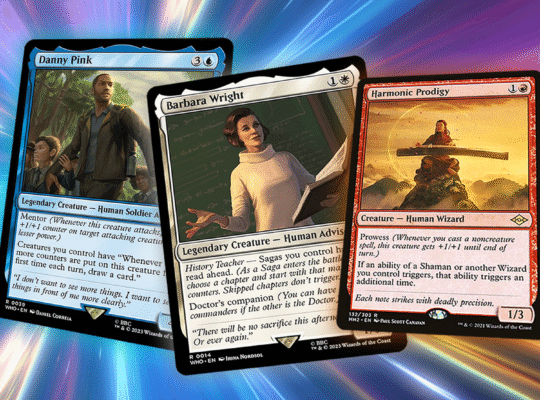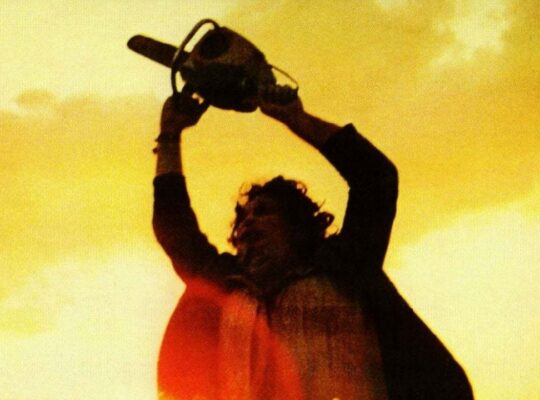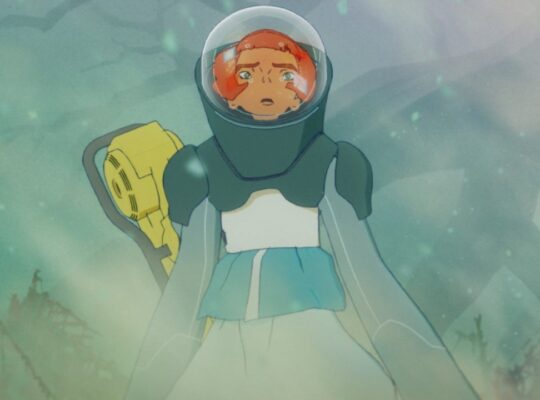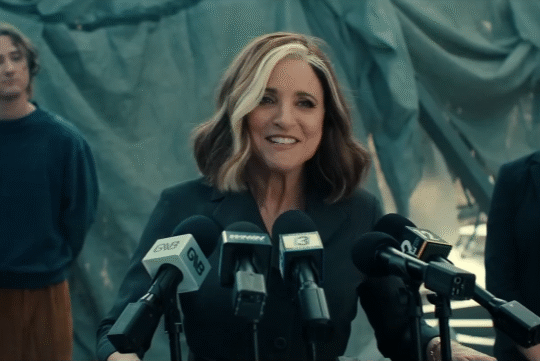
28 Years Later opens in theaters Friday, June 20.
28 Days Later is widely credited with vivifying zombie movies in the early 2000s. Director Danny Boyle and screenwriter Alex Garland shook the subgenre out of rigor mortis and pushed it into a full-blown sprint, and the dead have been running and walking (and Walking… and Walking… and Walking…) onscreen ever since. But as great horror usually does, 28 Days Later spoke to a moment – specifically the terror attacks of September 11 and the resulting geopolitical fallout – and hauntingly captured how easily rage and fear can trap people in cycles of violence in the wake of a disaster. Following more recent upheavals like Brexit and the COVID-19 pandemic, the new sequel 28 Years Later feels like a bookend to that idea, turning its focus to what it takes to break the cycle. Boyle and Garland dive back into their infected hellscape headfirst, and the decades of perspective they bring back to post-apocalyptic Britain leave 28 Years Later’s musings on what matters most feeling right on time.
Boyle sidesteps the wider spread of the Rage virus suggested by the end of 2007’s 28 Weeks Later by quickly establishing that the infection has been pushed back and contained to the U.K. mainland. Enough time has passed that an entire generation has sprung up without any first-hand experience of how the world fell apart after the outbreak. , 28 Years Later wisely centers its action on 14-year-old Spike (Alfie Williams), a citizen of the heavily fortified Holy Island who’s taking his first steps into the wilderness as a hunter-in-training with his dad, Kraven Jamie (Aaron Taylor Johnson). Young enough to want to bring a toy on the hunt, but old enough to know that’s kid stuff, Spike’s vulnerability and bravery are at constant odds as he witnesses the terrors of the Rage virus.
Williams (in his film debut) effortlessly shoulders the swings between those poles, helping to ground 28 Years Later in an emotional realism that evokes what Cillian Murphy achieved in 28 Days Later. Yes, Spike makes mistakes and hesitates, but rarely if ever do these feel like the actions of a helpless child in such a cruel world. Instead, Boyle consistently drives home the idea that Spike and his peers have been forced to grow up too quickly. The way Holy Island’s citizens are lionizing Spike’s ascension to the hunter role, good-natured though it is, has a haunting, violence-begets-violence quality to it, underlined by the montages of child soldiers and the war poetry of Rudyard Kipling peppered into the edit. Holy Island makes for an effective, if not all that subtle, microcosm of isolationism, and the threats that seem to get under the citizens’ skin most – like Ralph Fiennes’ Kelson, who we’ll get to in a moment – will feel deeply familiar to anyone who hasn’t been living under a rock for the last five years.
Taylor-Johnson’s Jamie, who would’ve been about Spike’s age at the time of the initial outbreak, presents a thornier take of how manhood has evolved in this decades-long quarantine. He’s incredibly patient and supportive – tender, even – towards Spike in their one-on-one time, but Jamie embellishes Spike’s prowess with boorish bravado. It’s enough to make the boy more insecure about his survival fundamentals. Taylor-Johnson embodies those conflicting sides of fatherhood without either becoming too one-note. Jamie’s detached treatment of Spike’s ailing mom Isla (Jodie Comer) further drives a wedge between the two, especially once Spike realizes that there’s more that both of them could have been doing to help her. Isla experiences near-constant bouts of disorientation and pain, putting Spike into a position of caretaking that further accelerates his coming-of-age. It’s rich work from Comer, and though Isla’s scattered mind makes her a slightly less-focused character in her own right, her love for Spike shines through her pain. The lessons she has for him end up feeling even more valuable than Dad’s tips for taking infected out in one shot.
28 Years Later’s greatest challenge is one of Boyle and Garland’s own making: the explosion of zombie fiction inspired by 28 Days Later means a lot of points of comparison for both the action and the drama. The infected action is slick and well-staged, but it’s here that the hordes of imitators have most watered down Boyle’s brand of zombie violence. 28 Years Later introduces some new subspecies of infected that feel like they could’ve shambled right out of Left 4 Dead, some of which pose questions about the nature of the infection that beg to be answered in the already-shot sequel 28 Days Later: The Bone Temple.
Most effective are the Alpha infected, a truly hilarious name for the brutes given the themes Garland’s script trafficks in. These crazy-ripped, nigh invincible hulks immediately ratchet up the tension any time they’re on screen, with finishers that would make even Sub-Zero exclaim “flawless victory” in satisfied wonder. A chase scene involving an Alpha making its way towards Holy Island results in one of the most unbearably tense moments in the film, like if the oncoming train from that scene in Stand By Me were a naked bodybuilder running full-tilt at the leads… a hog-wild encounter, to be sure. But as great as the makeup and digital effects in 28 Years Later are, it’s just not as exciting to see a person kill a zombie (or vice versa) as it was in 2002. Boyle and Garland seem content to let their imitators and acolytes try to outdo each other. 23 years later, they’re more concerned with matters of the heart.
Boyle chases the guerilla-filmmaking textures of 28 Days’ groundbreaking digital cinematography by shooting 28 Years Later mostly on iPhone 15 Max Pros. The small size of those phones compared to big unwieldy movie cameras does allow for seriously kinetic coverage during the action scenes. As Boyle himself dubbed it, there’s a “poor man’s bullet time” effect accentuating some killshots that looks so cool the first time, but loses just a bit of its luster by its fifth or sixth deployment. That shifty camera move is also infrequently used to accentuate character, like when Boyle wants to underline Jamie’s bubbling lower case “r” rage by focusing on a knife in his hands and performing just a little shift to remind us that the virus doesn’t create fury, it merely amplifies it past all reason. Boyle puts the iPhone camera to work in low-light situations as well, painting Spike’s zombie nightmares in angry night-vision reds.
It’s a testament to how far technology has advanced since 28 Days Later that the “shot on iPhone” acknowledgment rarely feels that relevant – though the professional-grade lenses that Boyle and his frequent cinematographer Andrew Dod Mantle strap to their consumer-grade smartphones probably have something to do with that. They highlight the beauty of the British countryside so well that it never feels like an unfavorable trade for 28 Days’ chillingly empty London. Drone shots similarly add a propulsive new view on the action, weaving in and out of groups of infected with dizzying speed.
But as is often the case in zombie fiction – here, let me just lean in and whisper real quick… maybe we’re the real monsters. 28 Years Later teases out the significance of Kelson , a mysterious outcast drawn as a Colonel Kurtz-type with a penchant for burning bodies en masse, and his relatively late entrance opens the door to some of the story’s most potent material. Kelson’s presence narrows the scope of the third act considerably, but, without being too specific about what he’s up to wandering around that there Bone Temple, it’s absolutely the right call for Spike’s final test. And Fiennes turns in a simple, yet devastatingly effective performance to augment it.



